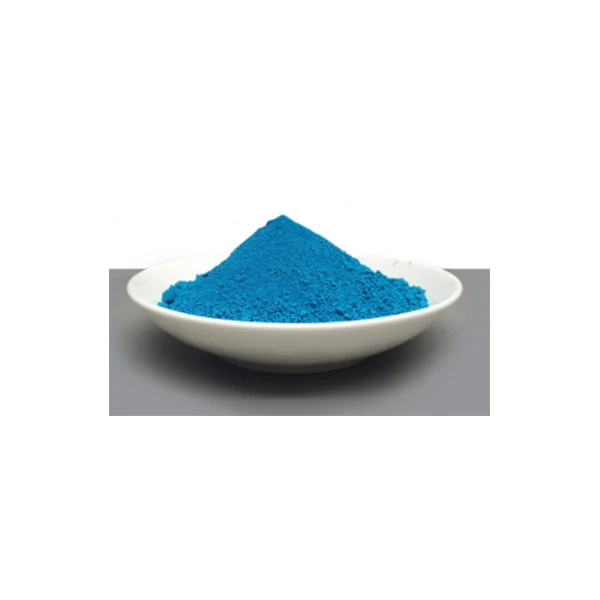Cobalt blue pigment, known for its vivid, stable, and enduring color, has long been a staple in the world of ceramic glazes. Its unique properties make it an ideal choice for artists and manufacturers alike, who seek to add a touch of elegance and durability to their ceramic creations. The deep, rich blue of cobalt blue pigment evokes a sense of tranquility and depth, enhancing the aesthetic appeal of paints, glazes, and other materials it colors. Its unique properties and timeless beauty continue to inspire artists and designers worldwide, making D-Ray Technology cobalt blue pigment a timeless and versatile addition to the palette of colors available to creators.

Historical Significance of Cobalt Blue Pigment
The use of cobalt blue pigment in ceramic glazes dates back centuries, with ancient civilizations in Persia and China among the first to utilize this striking color. In the West, the Renaissance period saw a surge in its popularity, as artists and craftsmen sought to replicate the rich, deep blues found in Oriental porcelain. Cobalt oxide, the primary component of cobalt blue pigment, was imported from distant lands, adding to its exclusivity and allure. Today, cobalt blue remains a symbol of tradition, craftsmanship, and artistic expression in ceramic art.
Chemical Composition and Properties
Cobalt blue pigment is derived from cobalt oxide (CoO), often combined with other oxides such as aluminum oxide (Al₂O₃) and silicon dioxide (SiO₂) to form stable, crystalline structures. These compositions give cobalt blue its characteristic stability and resistance to fading, even under exposure to UV light and extreme temperatures. Its high refractive index also contributes to its vibrant appearance, making it a favorite among ceramic artists for creating luminous, glass-like glazes.
Application Techniques
Mixing and Preparation
The application of cobalt blue pigment in ceramic glazes begins with careful mixing and preparation. The pigment is typically added to a base glaze recipe, which may include fluxes, stabilizers, and colorants. The exact proportions depend on the desired color intensity, glaze transparency, and firing conditions. Proper mixing is crucial to ensure an even distribution of the pigment, preventing streaking or blotching in the final glaze.
Application Methods
Several methods can be used to apply cobalt blue-containing glazes to ceramic ware, including dipping, brushing, pouring, and spraying. Dipping is a popular choice for uniform coverage, while brushing allows for more control over pattern and design. Pouring and spraying are suitable for larger pieces or those requiring intricate detailing. The choice of application method can also affect the final texture and appearance of the glaze.
Factors Influencing Glaze Appearance
Firing Temperature and Atmosphere
The firing temperature and atmosphere play critical roles in determining the final color and appearance of cobalt blue glazes. Higher firing temperatures tend to produce brighter, more intense blues, while lower temperatures may result in a duller, greener hue. Reduction firing, where oxygen is limited during the firing process, can enhance the saturation and depth of the blue color. Conversely, oxidation firing, with ample oxygen present, may yield lighter, more transparent shades.
Glaze Thickness and Composition
The thickness of the glaze layer and its composition also impact the final color. Thicker glazes tend to absorb more light, resulting in darker, more intense colors. The inclusion of opacifiers or other colorants can further modify the appearance, creating complex and nuanced shades. The interaction between cobalt blue and other glaze components, such as iron oxides or titanium dioxide, can lead to unexpected color shifts and must be carefully managed.
Practical Considerations and Troubleshooting
Color Variability
Due to the sensitive nature of cobalt blue pigment, achieving consistent color can be challenging. Variables such as raw material sources, firing conditions, and glaze formulation can all contribute to color variability. Regular testing and adjustments are necessary to maintain desired color consistency.
Defects and Remedies
Common defects in cobalt blue glazes include bubbling, crawling, and pinholing. These issues can often be attributed to improper mixing, firing conditions, or contamination. Addressing these defects may involve refining the glaze recipe, adjusting firing schedules, or improving workspace cleanliness.
Conclusion
The application and practice of cobalt blue pigment in ceramic glazes is a blend of art and science, requiring a deep understanding of both material properties and craftsmanship. By mastering the art of mixing, applying, and firing cobalt blue glazes, ceramic artists and manufacturers can create pieces that are not only beautiful but also enduring. As we continue to explore and innovate with this timeless pigment, the possibilities for creative expression in ceramic art remain boundless.
https://www.draycolor.com/application-and-practice-of-cobalt-blue-pigment-in-ceramic-glazes.html

